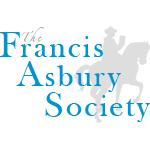Scripture reading: Philippians 2:5–11
Who is that Baby?
Who do you say that I am? (Matthew 16:15)
Though Scriptures are clear that the Word became flesh (John 1:14), they leave us with many theological and philosophical questions about how God and man could co-inhabit the same body. Did God change into a man? Did Jesus change into God? Was Jesus part God and part man, like a centaur is part man and part horse? Was he fully man, or did he just pretend to be? Was he fully God?
Finding words to explain the incarnation was perhaps the greatest challenge for the early Church. During the first centuries of the Christian era many unbiblical notions of Jesus’ identity circulated widely: Gnosticism, Arianism, Nestorianism, Adoptionism, etc. Eventually, a council of the church was called to seek consensus on how the God-man should be described. The result was the Chalcedonian Creed (451 A.D.). No document in the history of the Church is more important than this in defining who Jesus is. Just as the Council of Nicea (325 A.D.) gave orthodox vocabulary for the Trinity (“one God, three persons”), so the Council of Chalcedon gave the classic formula to describe the incarnation (“two natures, one person”). For almost 1,600 years, these words have been the touchstone of Christological orthodoxy for thinking Christians.
Before the Christmas season ends, let me encourage you to find a quiet spot and prayerfully meditate on these words written at Chalcedon so long ago. You will need a dictionary and a mind that is alert and focused! But the effort will both inform your head and warm your heart.
Therefore, following the holy fathers, we all with one accord teach men to acknowledge one and the same Son, our Lord Jesus Christ, at once complete in Godhead and complete in manhood, truly God and truly man, consisting also of a reasonable soul and body; of one substance with the Father as regards his Godhead, and at the same time of one substance with us as regards his manhood; like us in all respects, apart from sin; as regards his Godhead, begotten of the Father before the ages, but yet as regards his manhood begotten, for us men and for our salvation, of Mary the Virgin, the God-bearer; one and the same Christ, Son, Lord, Only-begotten, recognized in two natures, without confusion, without change, without division, with- out separation; the distinction of natures being in no way annulled by the union, but rather the characteristics of each nature being preserved and coming together to form one person and subsistence, not as parted or separated into two persons, but one and the same Son and Only-begotten God the Word, Lord Jesus Christ; even as the prophets from earliest times spoke of him, and our Lord Jesus Christ himself taught us, and the creed of the fathers has handed down to us.
Helpful? I hope so. But none of us can fully grasp the wonder of what happened when the Word became flesh and dwelt among us (John 1:14). When you can’t grasp the theology, simply worship the mystery.
’Tis mystery all: the Immortal dies! Who can explore his strange design?
In vain the first-born seraph tries to sound the depths of love divine.
‘Tis mercy all! Let earth adore; Let angel minds inquire no more.
(And Can It Be that I Should Gain, by Charles Wesley)
What are we to make of Jesus Christ? This is a question which has, in a sense, a frantically comic side. For the real question is not what are we to make of Christ, but what is he to make of us?—C. S. Lewis
point to ponder • Jesus is fully God and fully man . . . at the same time.
prayer focus • Those who diminish the glorious reality of Jesus’ identity.
